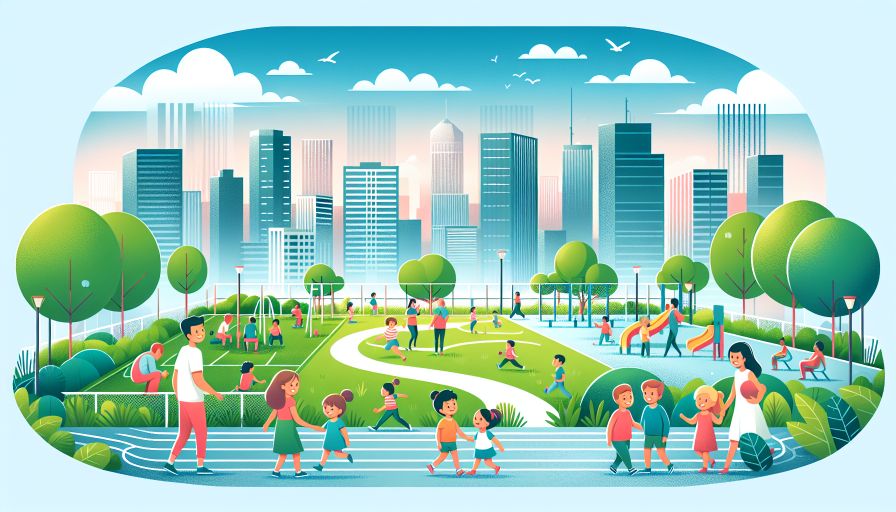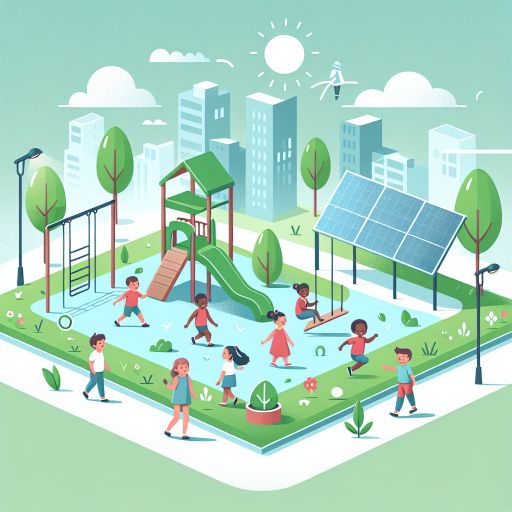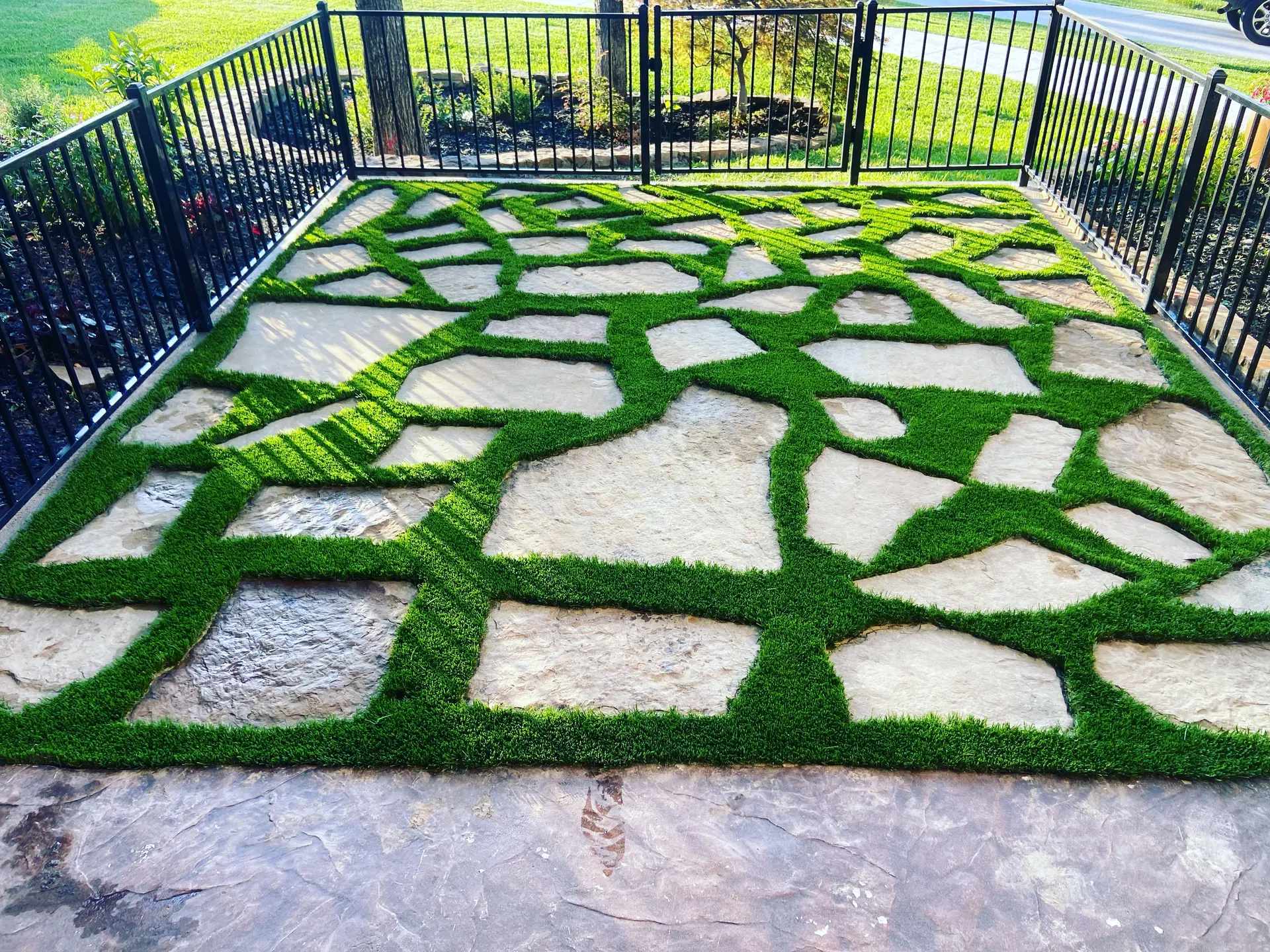
- Introduction to Eco-Friendly Play Areas
- The Evolution of Playground Turf: From Traditional to Modern Solutions
- Environmental Benefits of Modern Playground Turf
- Health and Safety Considerations for Urban Play Areas
- Economic and Maintenance Aspects of Eco-Friendly Playgrounds
- Case Studies and Real-World Applications
Introduction to Eco-Friendly Play Areas
In contemporary urban landscapes, the significance of creating safe, sustainable, and environmentally responsible play areas cannot be overstated. As cities expand and green spaces become increasingly scarce, the need for eco-friendly playgrounds has become more pressing. These playgrounds serve as vital recreational spaces for children, promoting physical activity, social interaction, and overall well-being.
Eco-friendly play areas integrate various environmentally conscious practices and materials to minimize their ecological footprint. One of the core components of these play areas is the use of modern playground turf, which offers numerous benefits over traditional options like natural grass or wood chips. This shift towards more sustainable materials is rooted in the broader movement to enhance urban green spaces while mitigating environmental impact.
Sustainable playground design accounts for not only the immediate physical environment but also the longer-term implications on urban ecosystems. By opting for eco-friendly materials, planners and designers aim to reduce water consumption, lower greenhouse gas emissions, and improve the durability and safety of playground surfaces. Consequently, modern playground turf has emerged as a pivotal element in this transformative approach to urban play areas.
Playgrounds are essential for child development, and the quality of the play surface can significantly influence the overall experience. Traditional surfaces like natural grass require substantial water and maintenance, while materials like asphalt or concrete pose safety risks. Modern playground turf addresses these issues by providing a safe, durable, and low-maintenance alternative that aligns with sustainable urban planning principles.
In summary, the introduction of eco-friendly play areas marks an important step in urban planning. These spaces not only offer safe and enjoyable environments for children but also contribute to broader environmental objectives. By adopting modern playground turf and other sustainable practices, cities can create vibrant, resilient play areas that support the health and well-being of their youngest residents while protecting the planet.
The Evolution of Playground Turf: From Traditional to Modern Solutions
The concept of playground turf has evolved significantly over the years. Initially, playgrounds were designed with natural grass, which, while aesthetically pleasing, came with a host of limitations, including high maintenance requirements and limited durability. As urban landscapes expanded and the need for sustainable solutions grew, the development of more advanced playground surfaces became essential.
Traditional Playground Surfaces
Before the advent of modern playground turf, the most common surfaces included natural grass, sand, and asphalt. These materials were widely used due to their availability and low initial costs. However, they presented significant drawbacks.
- Natural Grass: Requires regular watering, mowing, and reseeding. It can become muddy and slippery when wet, posing safety hazards.
- Sand: Provides a soft landing; however, it can harbor bacteria and requires frequent replenishing to maintain safety standards.
- Asphalt: Durable but offers limited cushioning, increasing the risk of injuries from falls. It also heats up quickly, making it uncomfortable during hot weather.
The Shift to Synthetic Solutions
As awareness of the limitations of traditional playground surfaces grew, the need for more sustainable, durable, and safe alternatives became evident. The development of synthetic playground turf aimed to address these issues. Modern playground turfs are typically made from materials such as polyethylene, polypropylene, and nylon.
Research indicates substantial benefits associated with synthetic turf, such as lower maintenance costs and improved safety. A study published by the National Recreation and Park Association (NRPA) highlights these advantages:
| Advantages | Details |
|---|---|
| Reduced Maintenance | Synthetic turf does not require watering, mowing, or pesticides. |
| Increased Durability | Materials are designed to withstand heavy use and extreme weather conditions. |
| Enhanced Safety | Cushioning layers reduce the risk of injuries from falls. |
Technological Advancements
Today’s modern playground turfs incorporate various technological advancements to optimize performance and sustainability. These include:
- Shock-Absorbing Layers: Multi-layered systems designed to absorb impact and reduce injury risk.
- Heat-Reflective Surfaces: Special coatings that reflect sunlight to keep the turf cooler.
- Anti-Microbial Treatments: Reduces the risk of bacteria and mold growth, ensuring a safer play environment.
The evolution of playground turf is a testament to the industry’s commitment to creating safer, more sustainable urban play areas. As technology continues to advance, these surfaces will likely become even more effective, benefiting children and communities alike.
Environmental Benefits of Modern Playground Turf
Modern playground turf offers several environmental benefits that contribute to more sustainable urban landscapes. One of the primary advantages is water conservation. Traditional grass turf requires significant amounts of water for maintenance, especially in arid regions. In contrast, modern synthetic turfs require minimal to no water, thus reducing overall water usage in urban areas.
Another notable benefit is the reduction in chemical pollutants. Maintaining natural grass typically involves the use of pesticides, herbicides, and fertilizers, which can run off into local waterways and negatively impact local ecosystems. Synthetic playground turfs eliminate the need for such chemicals, contributing to cleaner soil and water systems.
Moreover, modern playground turf often incorporates recycled materials. For instance, many products use recycled rubber from old tires, which not only repurposes waste but also reduces the demand for new raw materials. This recycling effort is a step towards more circular economic practices and helps reduce landfill use.
Energy consumption is another point of consideration. Although the initial production of synthetic turf does require energy, the energy saved by reducing maintenance activities such as mowing, watering, and chemical applications generally offsets this initial input. Over time, the overall carbon footprint can be lower for synthetic turfs compared to natural grass.
Furthermore, modern playground turf can aid in urban heat island mitigation. Some synthetic turfs are designed to reflect sunlight rather than absorb it, which helps in lowering surface temperatures in playground areas. This can contribute to a more comfortable and sustainable urban environment, particularly in densely populated cities where heat islands are a concern.
In summary, modern playground turf offers multiple environmental benefits, including water conservation, reduced chemical use, incorporation of recycled materials, lower energy consumption, and potential urban heat island mitigation. These aspects make it a viable option for creating eco-friendly play areas in urban landscapes.
Health and Safety Considerations for Urban Play Areas
A critical aspect of creating eco-friendly play areas is ensuring the health and safety of the children who use them. Modern playground turf plays a substantial role in addressing these concerns in urban landscapes.
One significant improvement offered by modern playground turf is its ability to cushion falls, thereby reducing the risk of injury. In fact, according to the Consumer Product Safety Commission (CPSC), inappropriate surfacing contributes to nearly 80% of playground-related injuries. Modern turf materials are engineered to absorb impact, which softens falls and minimizes potential harm.
Furthermore, these turfs are designed to be non-toxic and free from harmful chemicals, an important consideration for children who may come into close contact with the surface. Traditional playground materials, such as wood chips or gravel, can sometimes harbor harmful substances or present choking hazards. In contrast, many modern synthetic turf options are made from materials that have been rigorously tested to ensure they are safe for children.
Alarmingly, allergy concerns are also on the rise with natural grass play areas, as pollen can trigger respiratory issues. Modern playground turf eliminates this issue by providing a hypoallergenic surface. This can be especially beneficial in urban environments where air quality is already a major concern.
It is also worth noting the role of maintenance in health and safety. Traditional playground surfaces often accumulate debris, waste, and pathogens, compromising hygiene. Modern playground turf is easier to clean and maintain, significantly reducing the risk of infections and allergic reactions. Cleaning routines typically involve simple procedures such as rinsing with water and disinfecting, ensuring a consistently safe play environment.
Heat management is another important consideration. Urban areas are prone to higher temperatures due to the heat island effect. While some synthetic turfs have been criticized for their heat retention properties, recent advancements have addressed these issues. Modern playground turf often includes cooling technologies that reflect heat rather than absorb it, ensuring that the surface remains cool even on hot days.
Here is a summary comparison of key health and safety features between traditional and modern playground materials:
| Feature | Modern Playground Turf |
|---|---|
| Impact Absorption | High, engineered to reduce strains and fractures |
| Toxicity Risks | Low, made from non-toxic, safe materials |
| Allergy Risks | Low, hypoallergenic |
| Maintenance | Easy, regular cleaning and disinfecting |
| Heat Management | Uses cooling technology to stay cool |
In summary, modern playground turf offers significant health and safety benefits compared to traditional materials. By addressing impact absorption, toxicity, allergy risks, maintenance, and heat management, these turfs create a safer and healthier environment for children to play in urban areas.
Economic and Maintenance Aspects of Eco-Friendly Playgrounds
One of the principal considerations for any eco-friendly project is its economic viability and maintenance requirements. The implementation of modern playground turf in urban landscapes can offer both initial cost benefits and long-term savings when compared to traditional materials.
Firstly, the durability of modern playground turf means it incurs fewer replacement and repair costs over time. Traditional playground materials such as grass or wood chips tend to wear out more quickly, especially under heavy use, necessitating frequent maintenance and replacement. In contrast, modern turf solutions are designed to withstand frequent and intense use, reducing the need for regular refurbishment.
Additionally, playground turf requires significantly less water compared to natural grass. Urban areas often face water restrictions, and the cost of watering a natural grass playground can be substantial. By opting for synthetic turf, playgrounds can minimize their water usage, leading to cost savings and environmental benefits.
Maintenance is also simplified with playground turf. Traditional surfaces, especially grass, require regular mowing, fertilization, and pest control, all of which contribute to ongoing expenses. With synthetic turf, routine maintenance generally involves periodic cleaning and minor repairs, which are less labor-intensive and costly. This translates into lower maintenance expenses over the lifespan of the playground.
From an installation perspective, modern synthetic turf solutions can be more cost-effective, depending on the specific materials and layout required. While the initial investment for high-quality synthetic turf may be higher than for traditional surfaces, the reduced ongoing maintenance and replacement costs often result in overall savings in the long term. It is important to conduct a thorough cost-benefit analysis to determine the most economical choice for each specific project.
Moreover, synthetic turf can enhance the overall usability of playgrounds. Traditional surfaces can become muddy or uneven, especially during bad weather, making them less accessible and increasing maintenance needs. In comparison, synthetic turf provides a consistent and reliable playing surface year-round, ensuring that play spaces remain inviting and functional even in less-than-ideal weather conditions.
In conclusion, when evaluating the economic and maintenance aspects of eco-friendly playgrounds, modern playground turf stands out as a cost-effective and sustainable option. It offers significant long-term savings and ease of maintenance, making it a compelling choice for urban landscapes aiming to create sustainable and budget-friendly play areas.
Case Studies and Real-World Applications
Several urban areas around the world have successfully implemented eco-friendly playground turf with noteworthy results in terms of sustainability, safety, and community engagement. These real-world applications demonstrate the feasibility and benefits of using modern playground turf in urban landscapes.
Central Park, New York City
Central Park in New York City is one prominent example where eco-friendly playground turf has been integrated. The park’s playgrounds have adopted modern turf solutions to provide a safe, sustainable, and attractive environment for children. The turf is made from recycled materials and is designed to reduce heat absorption, making it more comfortable during hot weather. Moreover, Central Park’s focus on durability and low maintenance has made these playgrounds an exemplar of urban sustainability.
Trafalgar Square, London
In London, Trafalgar Square has incorporated modern playground turf in a heavily trafficked urban environment. The eco-friendly turf utilized here is constructed from recycled rubber and synthetic grass, which mimics the look and feel of natural grass while reducing the environmental footprint. The turf provides excellent shock absorption, enhancing the safety of children using the playground.
Sunset Park, San Francisco
Sunset Park in San Francisco showcases the use of innovative playground turf to create a green, safe environment in an otherwise concrete-heavy area. The eco-friendly turf here is notable for its water permeability, which helps manage stormwater runoff, a common issue in urban settings. Additionally, the material’s resistance to wear and tear from high foot traffic underscores its practicality for public spaces.
Chapultepec Park, Mexico City
Chapultepec Park in Mexico City is another instance where modern playground turf has been effectively used. This park’s playground areas feature eco-friendly turf that includes natural infill materials such as cork and coconut fibers, which offer a biodegradable alternative to synthetic options. This choice not only enhances sustainability but also provides a cushioned surface for safer play.
These examples from diverse locations illustrate the broad applicability and advantages of modern playground turf in creating eco-friendly urban play areas. They highlight how different materials, designs, and maintenance practices can coalesce to develop playgrounds that are environmentally sound, safe, and economically viable.


